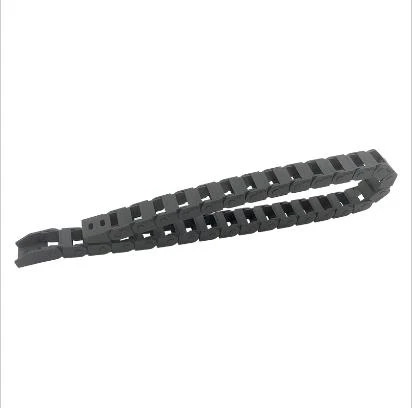Flexible Cable Carrier Solutions for Efficient Cable Management and Organization in Various Applications
Understanding Flexible Cable Carriers A Comprehensive Overview
In the modern industrial landscape, efficiency and reliability are paramount. One of the key components in achieving these goals in machinery and automated systems is the use of flexible cable carriers. Also known as drag chains or energy chains, these devices are essential for the organized routing of cables and hoses, ensuring that they remain protected, manageably arranged, and easily accessible during operations.
What is a Flexible Cable Carrier?
A flexible cable carrier is a mechanical device designed to secure and guide multiple cables and hoses, allowing them to move freely and without tangling. These chains consist of links, which can open up at the top or side, making the insertion and removal of cables and hoses straightforward. They are constructed from durable materials such as plastic or metal, designed to support the specific needs of various environments, including heavy industrial settings.
Importance of Flexible Cable Carriers
The significance of flexible cable carriers cannot be overstated. In environments where machinery is frequently in motion, such as robotic work cells or CNC machining centers, cables can become easily damaged if they are not properly managed. Flexible cable carriers help to
1. Protect Cables and Hoses By enclosing cables within a protective carrier, they are shielded from mechanical wear, abrasions, and environmental factors such as moisture or contaminants.
2. Improve Efficiency Organized cables lead to higher efficiency during operation. Flexible cable carriers prevent snagging and tangling, allowing for smooth movements and reducing downtime caused by cable-related issues.
3. Facilitate Maintenance When cables and hoses are neatly arranged within a carrier, accessing them for maintenance or replacement becomes much easier, saving valuable time for maintenance staff.
4. Enhance Safety A well-organized setup reduces the risk of accidents caused by tripping over loose cables or hoses, contributing to a safer workplace.
Types of Flexible Cable Carriers
There are various types of flexible cable carriers suited for different applications
flexible cable carrier

1. Open-Style Carriers These carriers feature links that open at the top, which allows for quick cable insertion and removal. They are ideal for environments where cables need to be changed frequently.
2. Closed-Style Carriers In contrast, these carriers have fully encapsulated links that provide maximum protection for the cables inside. They are suitable for harsh environments where contamination and mechanical stresses are prevalent.
3. High-Speed Carriers Designed specifically for high-speed applications, these carriers are engineered to reduce drag and wear, permitting faster movements without compromising cable integrity.
4. Bend Radius Carriers For applications with stringent bend radius requirements, specialized carriers that accommodate tight bends while still allowing smooth movement of the cables are available.
Applications in Industry
Flexible cable carriers are versatile and find applications across various industries such as
- Manufacturing In automated production lines and robotic systems, flexible cable carriers keep power and control cables organized, enabling seamless operation.
- Automation and Robotics Cable carriers are indispensable in robotic arms and automated guided vehicles (AGVs), where movement range and flexibility are key.
- Construction and Heavy Equipment They are used in cranes, excavators, and other heavy machinery, protecting cables from the rigors of outdoor conditions.
- Entertainment and Broadcasting In stage setups and broadcasting equipment, cable carriers manage data and power cables while allowing dynamic movements.
Conclusion
Flexible cable carriers play a crucial role in promoting efficiency, safety, and ease of maintenance in a variety of industrial applications. By properly routing and protecting cables and hoses, these carriers contribute to the longevity of equipment and the safety of operations. As industries continue to evolve and strive for greater efficiency, the importance of flexible cable carriers will undoubtedly grow, making them an invaluable asset in modern engineering and design. Whether you are designing a new automated system or maintaining existing machinery, considering the use of flexible cable carriers can yield significant benefits.








